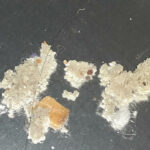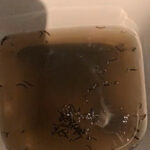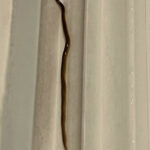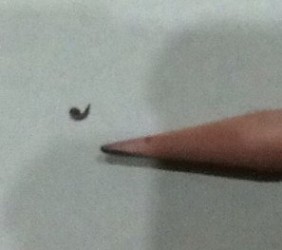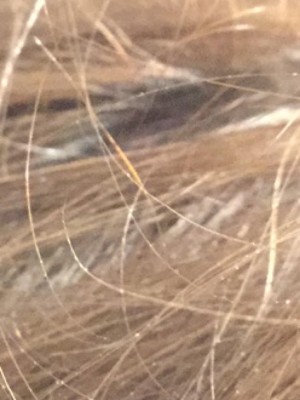
A reader wrote to us recently about the small, black worms that are getting under the bottom of his sliding door. The worms are a persistent problem, as about 10 manage to get into our reader’s house every day. The reader didn’t ask what the small, black worms are, which is just as well because many, many creatures might be described as “small, black worms.” All he is concerned about is keeping them from getting under his door, which is to say he wants to get rid of the worms in his house, but doesn’t seem to have any desire to completely annihilate them (as often seems to the case with readers caught up in the midst of a worm problem). We therefore won’t focus on what the small, black worms are, but only on how to keep the worms out of the house.
There are two things that make the reader’s question difficult for us in particular to answer. First, identifying what these creatures are – which is primarily what we do on this site – evidently isn’t of much concern to our reader, so the typical object of our discussion isn’t very important in the present case. (We will simply parenthetically note here that our reader is probably not finding worms. He is most likely finding some type of larvae, or potentially millipedes.) Second, the reader specifically asked about what he can spray outside his door to keep the creatures out. However, for a number of reasons we try not to recommend pesticides, so we’ll focus on other potential remedies.
Or rather remedy, as our suggestion is extremely simple: the reader must seal up the door through which the worms (again, probably larvae, but we’ll stick with “worms” for the sake of convenience) are entering. The reader of course might have thought of this already, but a surprising number of people merely want to kill their way out of a bug problem, and this approach often masks a simple alternative – just make it very difficult for whatever pest is bothering you to make it into your house.
The fact that our reader is dealing with a sliding door presents difficulties, however, at least if we are envisioning the problem correctly. If the reader simply means that the worms are coming through gaps in the door frame (or maybe even around the edges of the glass pane if the rubber seal is largely gone), then a fairly straightforward caulking operation is in order. However, if the worms are getting through a crack at the bottom of the door because it isn’t tightly fitted in its sliding track, the situation is more difficult. Obviously, you can’t just seal up the gap with something like caulk because then the door won’t move. You also have to be careful about any sort of stripping you use for similar problems. If you stick weatherstrip in the door, for instance, this could easily inhibit door movement unless it can somehow be inserted perfectly, causing no door resistance. The one thing that comes to mind are brush strips, which can provide a pretty solid seal without inhibiting door movement, so this is definitely something our reader should look into.
We recognize that our overall advice – seal the door – is a little generic and simple, but sometimes basic solutions are the best. We also recognize that our reader is potentially dealing with a tricky situation thanks to his sliding door, but the situation doesn’t seem hopeless. If any reader experienced a similar problem, please let us know in a comment. For now, we wish our reader the best of luck.
All About Worms is always free, always reader-supported. Your tips via CashApp, Venmo, or Paypal are appreciated! Receipts will come from ISIPP Publishing.



